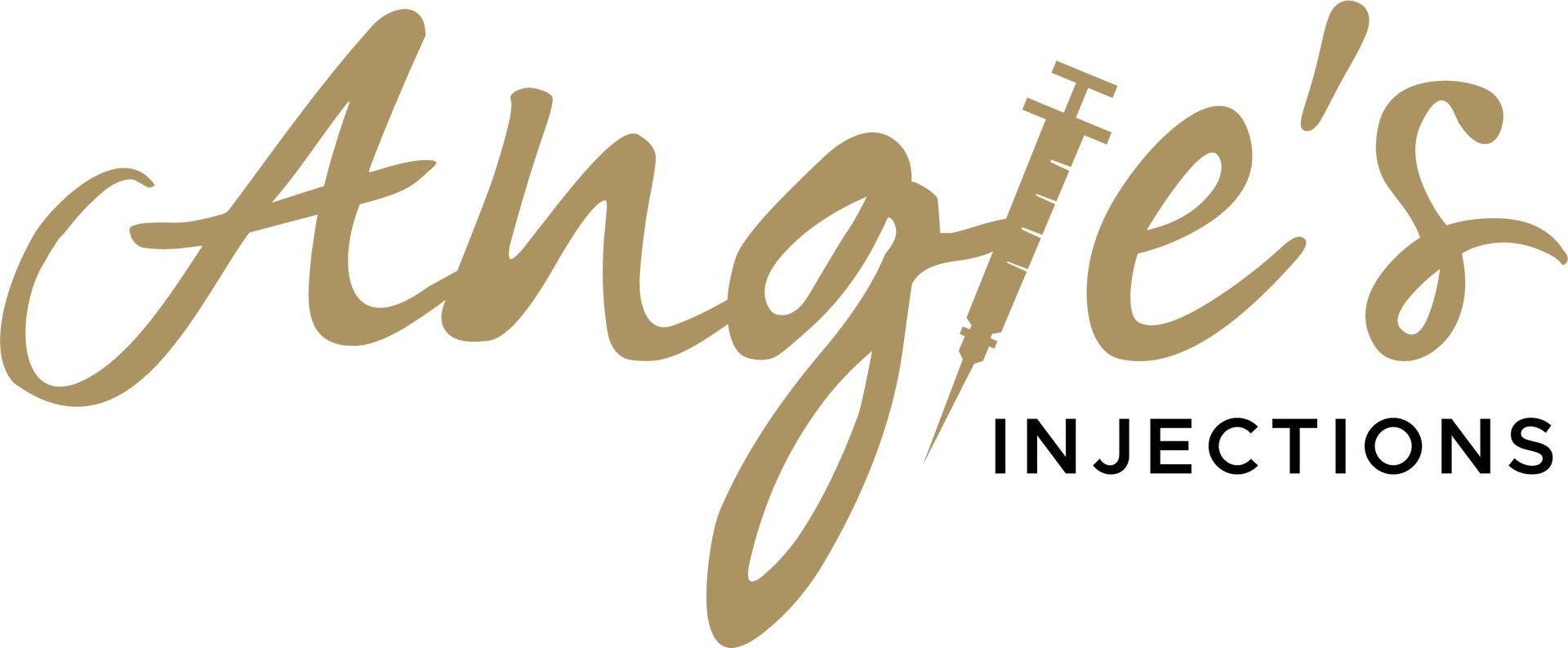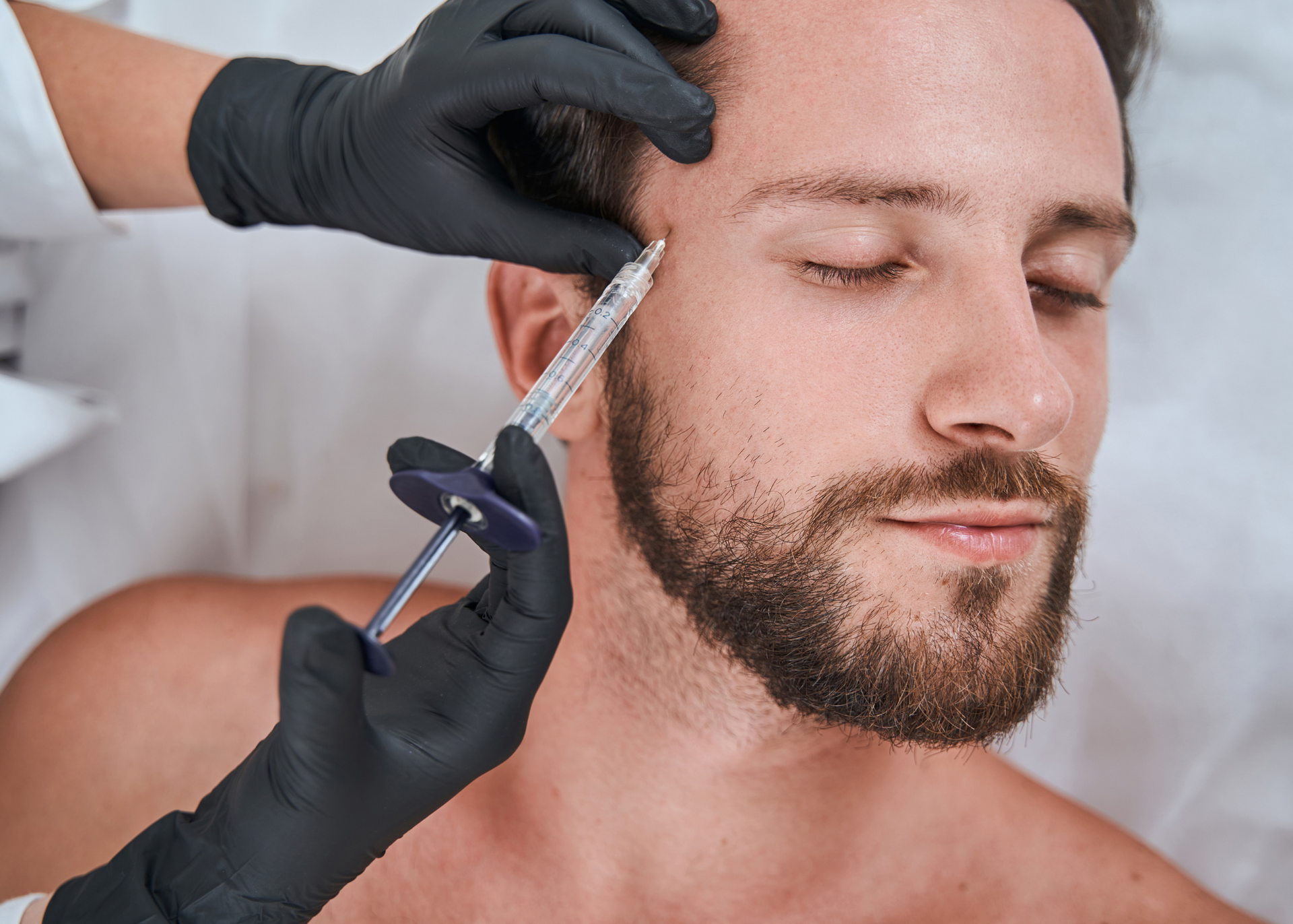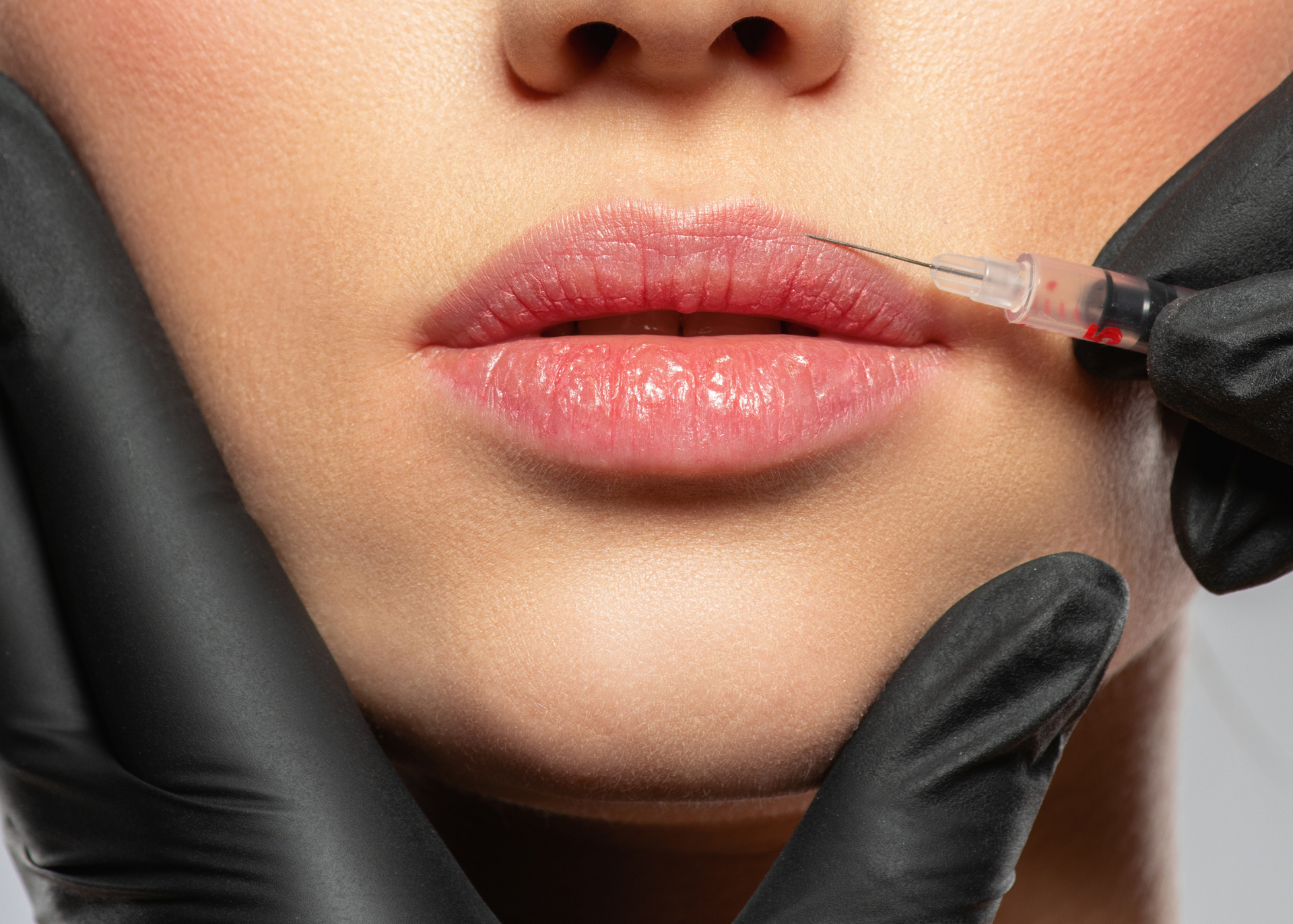Resources
Blog
By Angie Peterson
•
April 2, 2025
Hey Gorgeous! Unleash Your Inner Glow with Microneedling & PRP at Angie's Injections! Okay, ladies, let's talk real talk. You know that feeling when you catch a glimpse of yourself in the mirror and think, "Hmm, when did those little lines decide to move in?" We've all been there! But guess what? You don't have to just accept those wrinkles as a fact of life. At Angie's Injections in beautiful Eagle Mountain, Utah, we're all about turning back the clock and boosting your confidence. And let me tell you, there's nothing I love more than getting messages like, "Yes! I definitely notice a difference. I especially noticed in the beginning. My confidence increased!" It's why I do what I do! If you're looking for a way to achieve that youthful, radiant skin you've been dreaming of, you've come to the right place. Today, we're diving deep into the magic of microneedling with PRP, a powerhouse combo that's taking the beauty world by storm. And guess what? Angie's Injections is your go-to spot for this incredible treatment. Let’s get glowing! Why Microneedling with PRP for Anti-Aging in Eagle Mountain, Utah is Your New Best Friend Alright, let’s break it down. Microneedling, on its own, is fantastic. It involves using tiny, sterile needles to create micro-injuries in your skin. Sounds a bit scary, right? But trust me, it’s a game-changer! These tiny injuries stimulate your skin’s natural healing process, boosting collagen and elastin production. Think of it as hitting the reset button on your skin! Now, add PRP (Platelet-Rich Plasma) into the mix, and you've got a supercharged treatment. PRP is derived from your own blood, which is spun in a centrifuge to separate the platelet-rich plasma. This plasma is packed with growth factors that accelerate healing and rejuvenation. When combined with microneedling, it takes the results to a whole new level. Why is this combo so amazing for anti-aging? Well: Collagen Boost: It dramatically increases collagen production, which plumps up your skin and reduces wrinkles. Elastin Enhancement: It also stimulates elastin, giving your skin that youthful bounce and elasticity. Faster Healing: PRP speeds up the healing process, minimizing redness and downtime. Natural Results: Because it uses your own blood, the results are incredibly natural and long-lasting. And speaking of results, here's what one happy client had to say on Google Business reviews: " Angie is amazing! She is so knowledgeable and makes you feel so comfortable. " How Microneedling with PRP Reduces Fine Lines and Wrinkles in Eagle Mountain Fine lines and wrinkles are like those uninvited guests that just won’t leave, right? But with microneedling with PRP, you can show them the door! The tiny micro-injuries created during the treatment trigger your skin’s natural repair mechanisms, leading to the production of new collagen and elastin. This process effectively fills in fine lines and wrinkles, smoothing out your skin’s texture. Here’s how it works its magic: Stimulates Collagen Production: Collagen acts like a scaffolding for your skin, keeping it firm and smooth. Promotes Cellular Turnover: It encourages the shedding of old, damaged skin cells and the growth of new, healthy ones. Improves Skin Texture: By smoothing out irregularities, it leaves your skin looking and feeling incredibly soft. Targets Specific Areas: Whether it’s crow’s feet, forehead lines, or smile lines, microneedling with PRP can target those problem areas with precision. Let’s face it, we all want that smooth, youthful complexion. And at Angie’s Injections, we can help you achieve just that. The Long-Term Benefits of PRP Microneedling for Skin Rejuvenation in Eagle Mountain, Utah It’s not just about the immediate glow, ladies. Microneedling with PRP offers long-term benefits that keep your skin looking amazing for years to come. Here’s why it’s a smart investment in your skin’s future: Sustainable Collagen Production: Regular treatments encourage ongoing collagen production, keeping your skin firm and youthful. Improved Skin Elasticity: It helps maintain your skin’s elasticity, preventing sagging and keeping it supple. Reduced Scarring: It can minimize the appearance of acne scars and other blemishes, giving you a smoother complexion. Enhanced Skin Tone: It evens out skin tone and reduces hyperpigmentation, leaving you with a radiant glow. And here’s another glowing review from a satisfied client: " Angie is so professional and knowledgeable. She made me feel so comfortable and I am so happy with my results! I highly recommend her! " How to Prepare for Your Microneedling with PRP Treatment at Angie's Injections in Eagle Mountain Alright, you’re ready to take the plunge! But how do you prepare for your microneedling with PRP treatment? Don’t worry, we’ve got you covered. Here are some tips to help you get the most out of your session: Avoid Sun Exposure: Stay out of the sun for at least a week before your treatment. Stop Using Retinoids: Avoid using retinoid products for a few days before your appointment. Stay Hydrated: Drink plenty of water to keep your skin hydrated and healthy. No Blood Thinners: Avoid taking blood-thinning medications or supplements. Come Clean-Faced: Arrive with clean, makeup-free skin. Following these simple steps will ensure you get the best possible results from your treatment. What to Expect During and After Your PRP Microneedling Session in Eagle Mountain, Utah Okay, let’s walk through what you can expect during and after your microneedling with PRP session. During the Treatment: First, a small amount of your blood is drawn. This blood is then spun in a centrifuge to separate the PRP. Your skin is cleansed and numbed with a topical anesthetic. The microneedling device is used to create tiny punctures in your skin. The PRP is then applied to your skin, allowing it to penetrate the micro-channels. After the Treatment: You may experience some redness and mild swelling, similar to a sunburn. This typically subsides within a few days. Avoid wearing makeup for at least 24 hours. Use a gentle cleanser and moisturizer. Avoid direct sun exposure and wear sunscreen. Follow any aftercare suggestions Angie provides you. Remember, everyone’s skin is different, so results may vary. But with proper care, you’ll be glowing in no time! Why Angie's Injections is the Best Place for Microneedling with PRP in Eagle Mountain Why choose Angie's Injections for your microneedling with PRP treatment? Well, it’s simple: Expertise and Experience: Angie is highly trained and experienced in performing these treatments. Personalized Care: She takes the time to understand your unique needs and goals. High-Quality Products: Only the best products and equipment are used, ensuring optimal results. Comfortable Environment: You’ll feel relaxed and pampered in a welcoming and comfortable setting. Amazing Results: She is dedicated to helping you achieve the beautiful, youthful skin you deserve. And here’s another happy customer sharing their experience: " Angie is the best! I love my results and I always feel so comfortable and relaxed during my appointments. Highly recommend! " Maintaining Your Results: Post-Treatment Skincare Tips from Angie's Injections Once you’ve achieved that gorgeous glow, you’ll want to keep it going. Here are some post-treatment skincare tips to maintain your results: Stay Hydrated: Drink plenty of water to keep your skin plump and hydrated. Use Sunscreen: Protect your skin from harmful UV rays with a broad-spectrum sunscreen. Gentle Cleansing: Use a mild cleanser to avoid irritating your skin. Moisturize Regularly: Keep your skin moisturized to maintain its elasticity. Healthy Diet: Eat a balanced diet rich in fruits and vegetables. By following these tips, you can extend the benefits of your microneedling with PRP treatment and keep your skin looking radiant. Ready to Glow? Book Your Appointment at Angie's Injections Today! Ladies, if you’re ready to say goodbye to wrinkles and hello to youthful, glowing skin, microneedling with PRP at Angie’s Injections is your answer. Don’t wait any longer to invest in yourself. Book your appointment today and let Angie help you unleash your inner glow! Click "Book Now" to schedule your consultation and take the first step towards a more confident you. You deserve it!
By Angie Peterson
•
March 15, 2025
How often should you get Botox in Eagle Mountain? Find out! Angie's Injections provides personalized Botox treatments for optimal results for everyone in Utah County.
March 4, 2025
Hey, Eagle Mountain and Saratoga Springs! Let’s talk about feeling amazing, confident, and absolutely glowing. You’ve probably heard whispers about Angie’s Injections. And if you haven’t? Well, buckle up, because you’re about to discover your new best friend in the world of beauty and confidence. Angie’s favorite thing? Getting those incredible messages like, "Yes! I definitely notice a difference. I especially noticed in the beginning. My confidence increased!" It's those real, heartfelt testimonials that make her passion shine. It's not just about injections; it's about boosting your inner sparkle and letting it radiate outwards. So, let’s get into what makes Angie’s Injections the go-to spot for women looking to feel their absolute best! Why Eagle Mountain Women are Choosing Affordable Dermal Fillers Eagle Mountain Utah Okay, let’s be real. Dermal fillers can feel like a luxury, right? But Angie’s Injections is changing the game by offering top-notch services that won’t break the bank. Women in Eagle Mountain are flocking to her because they can get that refreshed, youthful look without emptying their wallets. Quality Products: Angie uses high-quality products, ensuring you get the best results. Ever thought about buying weight loss, botox or filler products online? Buyer beware. Too many horror stories of people injecting themselves with non FDA approved products and ending up in the ER from complications. Personalized Approach: She understands that everyone is unique and tailors her treatments to your specific needs. Budget-Friendly: You can achieve your beauty goals without sacrificing your savings. Here’s a glimpse of what her clients are saying on Google Business: "Angie is amazing! She is very knowledgeable and makes you feel comfortable. I love my results!" This speaks volumes about her dedication to client satisfaction. Best Botox Treatments for Wrinkles Eagle Mountain Wrinkles happen, we all know that. But that doesn’t mean we have to live with them if we don't want to. Angie’s Injections has become the go-to spot for Botox treatments in Eagle Mountain, and for good reason. She knows her stuff! Expertise: Angie is highly skilled and experienced, ensuring safe and effective treatments. Natural Results: She focuses on enhancing your natural beauty, not creating an overdone look. Quick and Convenient: Botox treatments are fast, making them perfect for busy women. Think about it: a quick lunchtime appointment and you’re back to your day, feeling refreshed and confident. It’s no wonder she’s become a local favorite. Lip Filler Enhancement for Natural Plumpness and Achieving Your Dream Pout Let's talk lips! Who doesn’t want a perfect pout? Angie’s Injections specializes in lip filler enhancements that give you natural, plump, and kissable lips. Customized Results: She works with you to achieve the exact look you want. Subtle or Plump: Whether you want a subtle enhancement or a little more plump, Angie can make it happen. Comfortable Experience: She prioritizes your comfort, making the process as painless as possible. One Google Business review says, "Angie did an amazing job on my lips! I was nervous, but she made me feel so comfortable. I love my results!" This is the kind of feedback that shows how Angie’s personal touch makes all the difference. Why Angie's Injections is the Preferred Choice for Semaglutide in Eagle Mountain So, what sets Angie’s Injections apart from the rest? It’s her commitment to providing exceptional service, personalized care, and outstanding results. Friendly and Welcoming Atmosphere: Angie creates a comfortable and relaxing environment. Focus on Natural Beauty: She enhances your natural features, helping you look and feel your best. Client Satisfaction: Angie prioritizes your satisfaction and goes above and beyond to exceed your expectations. Check out angiesinjections.com/pricing to see all the prices, services offered and to book your appointment. The Importance of Choosing a Trusted Injectables Provider in Eagle Mountain When it comes to injectables, you want to choose a provider you can trust. Angie is known for her professionalism, expertise, and commitment to safety. Certified and Experienced: Angie is highly trained and certified in all her treatments. Safe and Hygienic Practices: She adheres to strict safety and hygiene standards. Transparent and Honest: Angie provides honest and transparent information about her services. Your safety and satisfaction are her top priorities. How Angie's Injections Boosts Confidence and Self-Esteem in Eagle Mountain Women More than just beauty treatments, Angie’s Injections is about boosting your confidence and self-esteem. When you look good, you feel good. Enhanced Self-Image: Feel more confident in your appearance. Improved Mood: Experience a positive boost in your overall mood. Increased Self-Assurance: Approach life with greater confidence and self-assurance. Remember that message Angie loves? “Yes! I definitely notice a difference. I especially noticed in the beginning. My confidence increased!” That's what it's all about. Easy Booking and Flexible Scheduling at Angie's Injections in Eagle Mountain Angie understands that life is busy, which is why she offers easy booking and flexible scheduling. Online Booking: Schedule your appointments online at your convenience. Flexible Hours: Find a time that works for your busy schedule. Friendly Staff: Get assistance from a friendly and helpful team. Click "Book Now" button above to get scheduled. We'll reach out with follow up calls, texts and emails to ensure all your questions are answered. Staying Informed About the Latest Beauty Trends with Angie's Injections Angie stays up-to-date with the latest beauty trends and techniques, ensuring you receive the most advanced treatments. Continuous Learning: She invests in ongoing training and education. Last year she attended retreats in Scottsdale and Park City Innovative Techniques: Angie uses the latest techniques to deliver superior results. You can trust that you’re in good hands with Angie’s Injections. Ladies, if you’re looking to enhance your natural beauty, boost your confidence, and feel your absolute best, Angie’s Injections in Eagle Mountain is your go-to destination. With her expertise, personalized approach, and commitment to client satisfaction, you’ll leave feeling radiant and empowered. Your glow-up journey starts here!
Schedule Your Appointment
QUICK LINKS
Botox and Filler at Angie's Injections
PHONE: 801-449-1813
EMAIL: angie@angiesinjections.com
ADDRESS:
4095 East Pony Express Parkway, Eagle Mountain, Utah 84005, United States
LOCATED IN: Porter's Crossing Town Center



